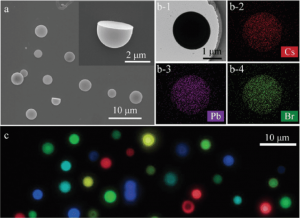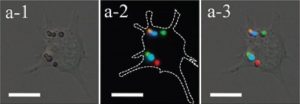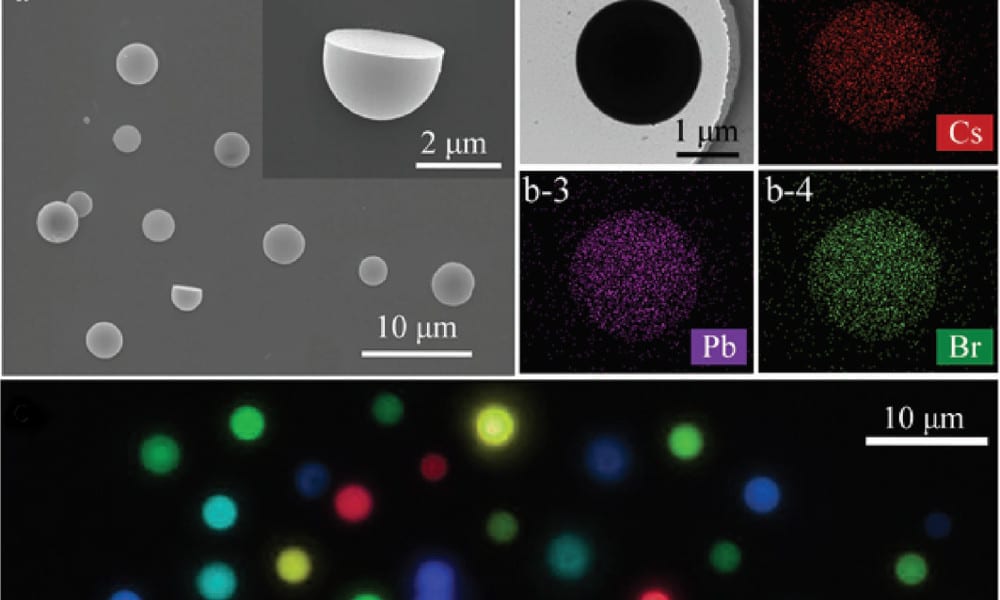Lead halide perovskite nanocrystals (NCs) are used in luminescent devices for their tunable color, narrow emission linewidths across the complete visible spectrum, and high quantum yields. However, all-inorganic perovskite NCs – those commonly integrated into devices – are inherently unstable and sensitive to hydrolysis. Consequently, researchers are developing new methods to stabilize these NCs without sacrificing their luminescent quality.
This month in Advanced Functional Materials, researchers from various institutions across China have reported the successful incorporation of CsPbX3 (X = Cl, Br, I) NCs in microhemispheres (MHSs) of a polystyrene matrix. The result is a “water-resistant” CsPbX3 NCs@MHSs hybrid. They have done this using a facile room temperature, solution phase, self-assembly approach that results in NCs around 30 nm in size, with a narrow size distribution (<10%) and emission linewidths (12-34 nm) (see Figure). The NCs are capped with a polymer, polyvinyl pyrrolidone (PVP), which not only stabilizes the NCs but also permits their subsequent fabrication into the polystyrene matrix. The resulting NCs@MHSs are highly stable and nontoxic; ideal candidates for bioimaging applications.

The researchers have demonstrated the use of NCs@MHSs as multicolor luminescence probes for bioassay displays (see Figure). Furthermore, they project that “using ten intensity levels and seven-color NCs@MHSs that show non-overlapping spectra, it would be possible to individually tag about ten million cells.” It is also envisaged that these NCs@MHSs could be useful for optoelectronic applications in the future.


















